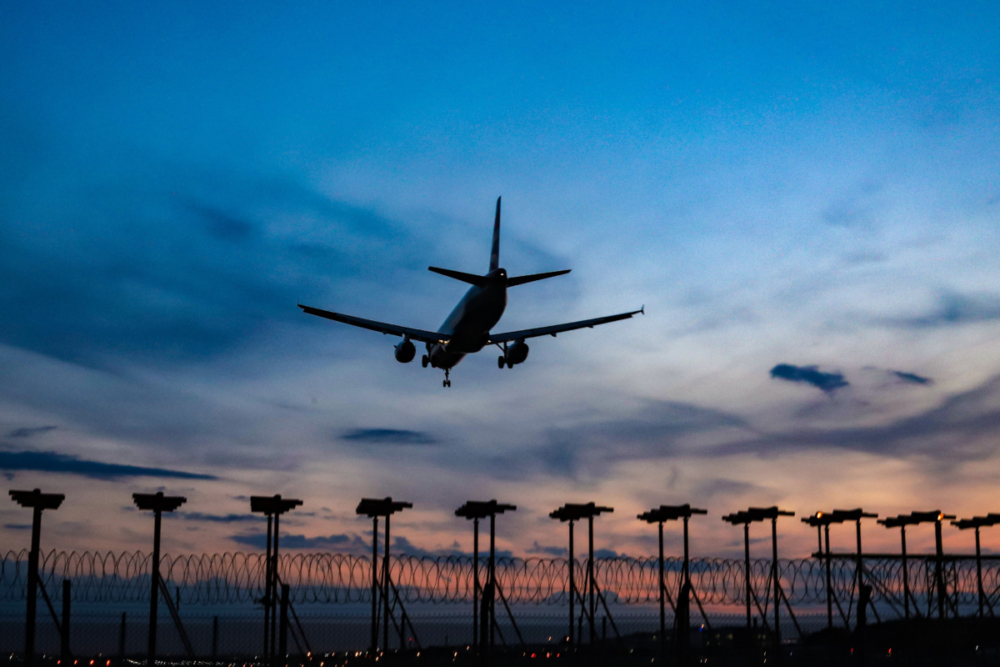This year, airlines and airports have been implementing modern solutions in a bid to minimize risk amid the global health crisis. As the world adapts to the change in climate, businesses are introducing ways to help with biosecurity efforts. Simple Flying had the opportunity to speak with Thomas Amilien, the CEO & co-founder of Clay AIR, a company specializing in innovative touchless solutions in the new era.

A clever system
Clay AIR traditionally works with automotive, VR, and AR firms on hand-tracking & gesture recognition technology to provide hardware-agnostic solutions. Notably, Renault recently announced a collaboration with Clay AIR to increase safety and add an extra layer of convenience for drivers. Clay AIR’s technology complements voice user interfaces, turning complex commands into quick and simple shortcuts. Gesture functions allow for multi-step interactions to take place with user-friendly gestures. For instance, drivers can control Android Auto navigation through simple in-air movements.
The company highlights that software can be adapted to cameras and hardware across the board. So, at an airport, it can be used at a kiosk if there is a camera already embedded. Therefore, passengers can benefit from hand tracking and gesture recognition to control menus without physically touching a platform.

Adapting with the times
The firm states that its ClayControl can assist passengers by reducing 80% of bacteria transfer with touchless technology in a post-pandemic market. As a result, Clay AIR has been in discussions with eight airports, namely in the United States and Asia, about implementing its solutions on the ground. It feels that by the end of 2021, hubs could have the technology in place.
There are other touchless technologies on the scene, such as voice recognition. Moreover, companies have also been focusing on using smartphones to minimize contact when it comes to aspects such as check-in. However, Amilien highlights that even with these procedures, passengers still often have to touch a screen.
Additionally, at airport border control, it’s often forbidden to use a smartphone. So, there are further limits to existing features. Altogether, Clay Air’s technology allows users to input commands with several different gestures.
“It’s 30 times riskier to get pathogen transfer with a touchscreen than anything else in an airport. So it’s just insane. For example, when you’re entering the US at the border control, you have all of these kiosks, and they want to gather some information. You have to answer with yes or no. Right now, that’s an issue,” Amilien told Simple Flying.
“So, we are using a library of gestures. We’ve got 40 gestures, like pinch, grab, point. Victory, we call that. It’s the two fingers. We have the call. We’ve got a lot of different gestures. And with this library of gestures, you can control or interact, like a keyboard or a mouse or a touchscreen, your interface, your menu.”

A new era
Above all, with a worldwide focus on reducing the risk of spreading bacteria and viruses, this sort of solution would undoubtedly be welcome. Organizations are constantly looking at safe yet user-friendly options for the passenger journey.
“I think [Clay AIR’s solution] minimizes the pathogen transfer, so to make sure that it’s safe, which means keeping crew, staff, and passengers as safe as possible. To implement this solution, as it’s versatile, you just have to tune the existing hardware, so it’s almost done. You don’t have a lot of things to do,” Amilien said.
“You can reuse an existing booth just adding a camera. And as it’s a software solution, we can adapt it to every kind of hardware, like existing hardware solutions, so that’s a key benefit for the customer. It’s not going to change all of the booths. So if you want to minimize the pathogen transfer, reusing the existing hardware, sometimes customize it a bit, that’s the best way.”

Plenty of potential
There is also the potential to implement these features within aircraft cabins. For instance, the tech would replace the need for fliers to touch IFE screens on their journey. However, as with every other innovation, several stages of clearance would need to be completed first.
Nonetheless, Clay AIR was already mastering this technology in various fields in the years leading up to the pandemic. However, the health crisis opened up the opportunity to provide a needed solution for the aviation industry amid the present conditions.

Most airlines have been forced to suspend large percentages of their flights amid stringent travel restrictions across the globe. As the situation continues to be dire heading into 2021, aviation bodies are still in talks with authorities to help open up travel.
Governments want the assurance that there can be less risk when it comes to air travel. So, for the industry to return to healthier next year, smart initiatives could go a long way in the road to recovery.

Major players such as Lufthansa and Emirates have been scaling up their contactless efforts at their hubs this year. Solutions such as CLAY Air’s would fit in well with these efforts.
What are your thoughts about Clay AIR’s touchless technology? Do you feel that these sorts of initiatives will help in the air to reduce contact at airports across the globe? Let us know what you think of the prospects in the comment section.
[ad_2]
Source link

